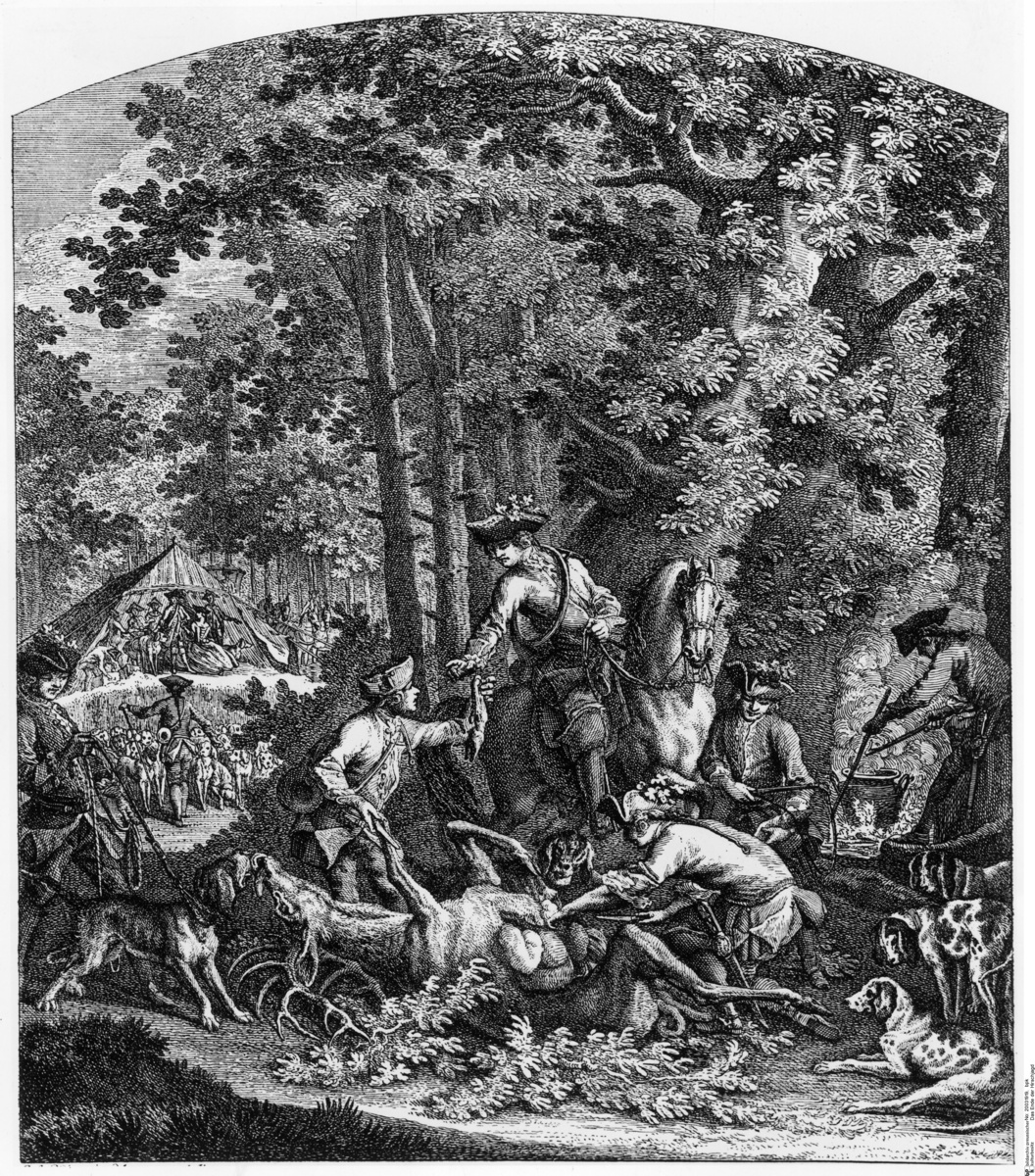Source

Source: bpk-Bildagentur, image number 20031919. For rights inquiries, please contact Art Resource at requests@artres.com (North America) or bpk-Bildagentur at kontakt@bpk-bildagentur.de (for all other countries).
A noble lord on horseback towers above his fallen prey, surrounded by his men and his hounds. Behind them, the courtly company is gathered in a tent whose relative modesty is hardly reflective of the scale of the hunting events some German princes staged in emulation of Louis XIV (r. 1661-1715) and his successors. During the Baroque and absolutist era, hunting continued to be a privilege of the noble elites and, in some cases, of the territorial sovereign exclusively. Hunts were staged in many forms – from coursings with huge parties to deer hunts involving only the sovereign and a few huntsmen and guests. Extravagant large-scale hunts served both representative and practical purposes – they underscored the prince’s powers while providing his kitchens with substantial amounts of game. The attitude of subjects – especially peasants – toward princely hunting activities was ambivalent at best. On the one hand, the hunts benefited the peasants by controlling the game population, which, when left unchecked, the damaged fields and forests. On the other hand, the massive hunting parties also did their own damage to crops. Copperplate engraving by Johann Elias Ridinger (1698-1767), c. 1740.

Source: bpk-Bildagentur, image number 20031919. For rights inquiries, please contact Art Resource at requests@artres.com (North America) or bpk-Bildagentur at kontakt@bpk-bildagentur.de (for all other countries).
bpk